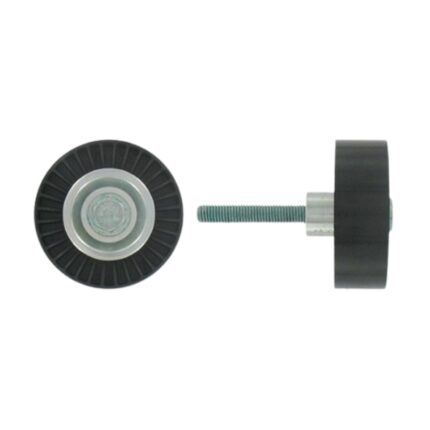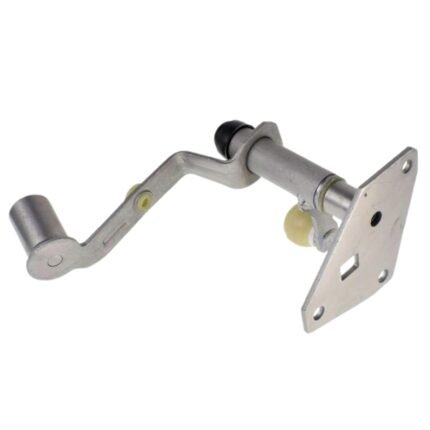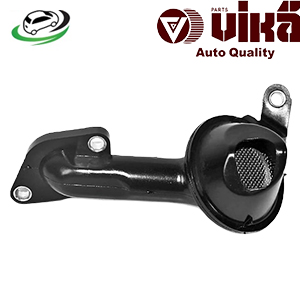Get AUDI A3 / VW Tiguan / Golf 1.8T/2.0T Oil Pump Pickup Tube 06J115251S
The oil pump pickup tube is an essential component of a vehicle’s engine lubrication system, responsible for ensuring that the engine receives an adequate supply of oil from the oil pan to keep all moving parts properly lubricated. In this detailed guide, we will explore the function of the oil pump pickup tube, its significance, benefits, common issues, and the best practices for maintenance.
What is an Oil Pump Pickup Tube?
The oil pump pickup tube is a metallic or composite tube that is directly connected to the oil pump, which is typically located at the bottom of the engine block near the oil pan. The purpose of the pickup tube is to draw oil from the oil pan (the reservoir where the oil is stored) and deliver it to the oil pump, which then circulates the oil throughout the engine.
The oil pump pickup tube generally features a screen or mesh filter at its inlet to prevent contaminants, debris, and sludge from entering the oil pump and causing damage or blockage in the lubrication system.
Function of the Oil Pump Pickup Tube
The oil pump pickup tube performs several critical functions within the engine lubrication system:
- Oil Delivery to the Oil Pump:
The primary function of the oil pump pickup tube is to collect oil from the oil pan and direct it to the oil pump. Without this tube, the oil pump would not be able to access the oil stored in the pan, and the engine would suffer from inadequate lubrication, leading to severe damage. - Filtering Oil:
Most oil pump pickup tubes have a mesh or screen filter at the end of the tube to capture larger particles of dirt, sludge, or debris that may have settled in the oil pan. This prevents contaminants from being sucked into the oil pump and circulating throughout the engine, which could cause clogging or damage to engine components. - Maintaining Oil Flow at Various Angles:
Since the oil pan is located at the base of the engine and the oil is stored there, the oil pump pickup tube ensures that the oil pump can access oil even when the vehicle is traveling up or down inclines, or when taking sharp turns. The design of the pickup tube allows it to maintain a consistent flow of oil to the pump regardless of vehicle orientation. - Optimizing Oil Pressure:
The oil pump relies on a steady and uninterrupted flow of oil to maintain optimal pressure. The pickup tube helps to regulate this flow by preventing air from entering the oil pump, which could otherwise cause cavitation (air pockets) and result in fluctuating or inadequate oil pressure.
Benefits of a Properly Functioning Oil Pump Pickup Tube
- Prevents Engine Damage:
The oil pump pickup tube ensures that oil reaches the oil pump, which is crucial for lubricating engine components. Proper lubrication minimizes friction and prevents excessive wear on critical parts like the crankshaft, camshaft, bearings, and pistons. Without a steady supply of oil, the engine can overheat, seize, or suffer catastrophic failure. - Promotes Efficient Engine Performance:
When the engine is properly lubricated, it operates more efficiently. The oil film reduces the amount of energy lost to friction, helping the engine run smoothly and deliver optimal performance. A working oil pump pickup tube ensures the engine receives consistent lubrication even under high-demand conditions, such as towing or driving at high speeds. - Extends Engine Lifespan:
A properly functioning oil pump pickup tube, combined with clean oil, helps extend the life of an engine by reducing wear and tear. This means fewer repairs and longer intervals between major overhauls or replacements. - Supports Oil Pressure Stability:
Consistent oil pressure is critical to the engine’s operation. If oil flow to the pump is interrupted or reduced due to a malfunctioning pickup tube, oil pressure can drop, causing the engine to run dry or overheat. A properly functioning oil pump pickup tube ensures steady pressure, which is crucial for maintaining engine health. - Reduces the Risk of Contamination:
The screen or mesh filter attached to the pickup tube plays an important role in keeping harmful contaminants out of the oil pump and the lubrication system. By filtering out large particles, the pickup tube helps protect engine components from wear caused by debris in the oil.
Common Issues with the Oil Pump Pickup Tube
While the oil pump pickup tube is designed to be durable, it can encounter various issues over time, especially in high-mileage or poorly maintained engines. Some common problems include:
- Clogged Screen or Mesh Filter:
Over time, the screen or filter at the end of the oil pump pickup tube can become clogged with debris, sludge, or metallic particles. This can restrict oil flow, resulting in oil starvation and a drop in oil pressure, which can lead to severe engine damage if not addressed. - Oil Sludge Build-Up:
Engines that are not properly maintained, particularly those that have extended oil change intervals or use poor-quality oil, can develop sludge. This thickened oil can accumulate around the oil pump pickup tube, restricting its ability to draw oil from the pan. - Cracked or Leaking Tube:
Although rare, the oil pump pickup tube itself can crack or develop leaks over time, especially in high-mileage engines or vehicles that have suffered from oil contamination. Cracks in the tube can lead to oil leaks or the entry of air into the oil pump, causing cavitation and a reduction in oil pressure. - Improper Installation:
During engine rebuilds or oil pump replacement, improper installation of the pickup tube can result in oil flow issues. If the tube is not securely connected to the oil pump, it can lead to air pockets or leaks, compromising the lubrication system. - Bending or Deformation:
Physical damage to the oil pump pickup tube, such as bending or deformation due to impacts or improper handling during engine work, can alter its function. This can lead to restricted oil flow and reduced engine lubrication.
Maintenance Tips for the Oil Pump Pickup Tube
- Regular Oil Changes:
Performing regular oil changes is one of the most important steps you can take to protect the oil pump pickup tube and the entire lubrication system. Fresh oil helps prevent the buildup of sludge and other contaminants that can clog the pickup tube or its filter. - Use High-Quality Oil:
Always use the manufacturer-recommended oil type and viscosity. High-quality oils provide better protection against wear, sludge formation, and contamination, ensuring the oil pump pickup tube remains clear of blockages. - Clean the Oil Pan and Pickup Tube:
During engine rebuilds or when replacing the oil pump, take the opportunity to thoroughly clean the oil pan and pickup tube. Removing accumulated sludge or debris helps restore proper oil flow and ensures the longevity of the lubrication system. - Monitor for Low Oil Pressure:
Pay attention to the oil pressure gauge or warning light on your dashboard. If you notice a drop in oil pressure, it may be an indication that the oil pump pickup tube is clogged or malfunctioning. Addressing the issue promptly can prevent engine damage. - Inspect the Oil Pan and Pickup Tube for Damage:
Whenever the oil pan is removed, inspect the oil pump pickup tube for signs of cracking, bending, or clogging. If any damage is detected, replace the pickup tube immediately to avoid further complications.
Conclusion
The oil pump pickup tube plays a critical role in ensuring that the engine receives the proper amount of oil for lubrication, cooling, and efficient operation. By delivering oil from the oil pan to the oil pump, the pickup tube helps maintain steady oil pressure, prevent engine wear, and reduce the risk of catastrophic failure.
Regular maintenance, including frequent oil changes and inspections, is key to keeping the oil pump pickup tube and the entire lubrication system in top condition. By addressing potential issues early and using high-quality oil, you can extend the life of your engine and prevent costly repairs.
Follow us on Facebook for more parts.




Reviews
Clear filtersThere are no reviews yet.